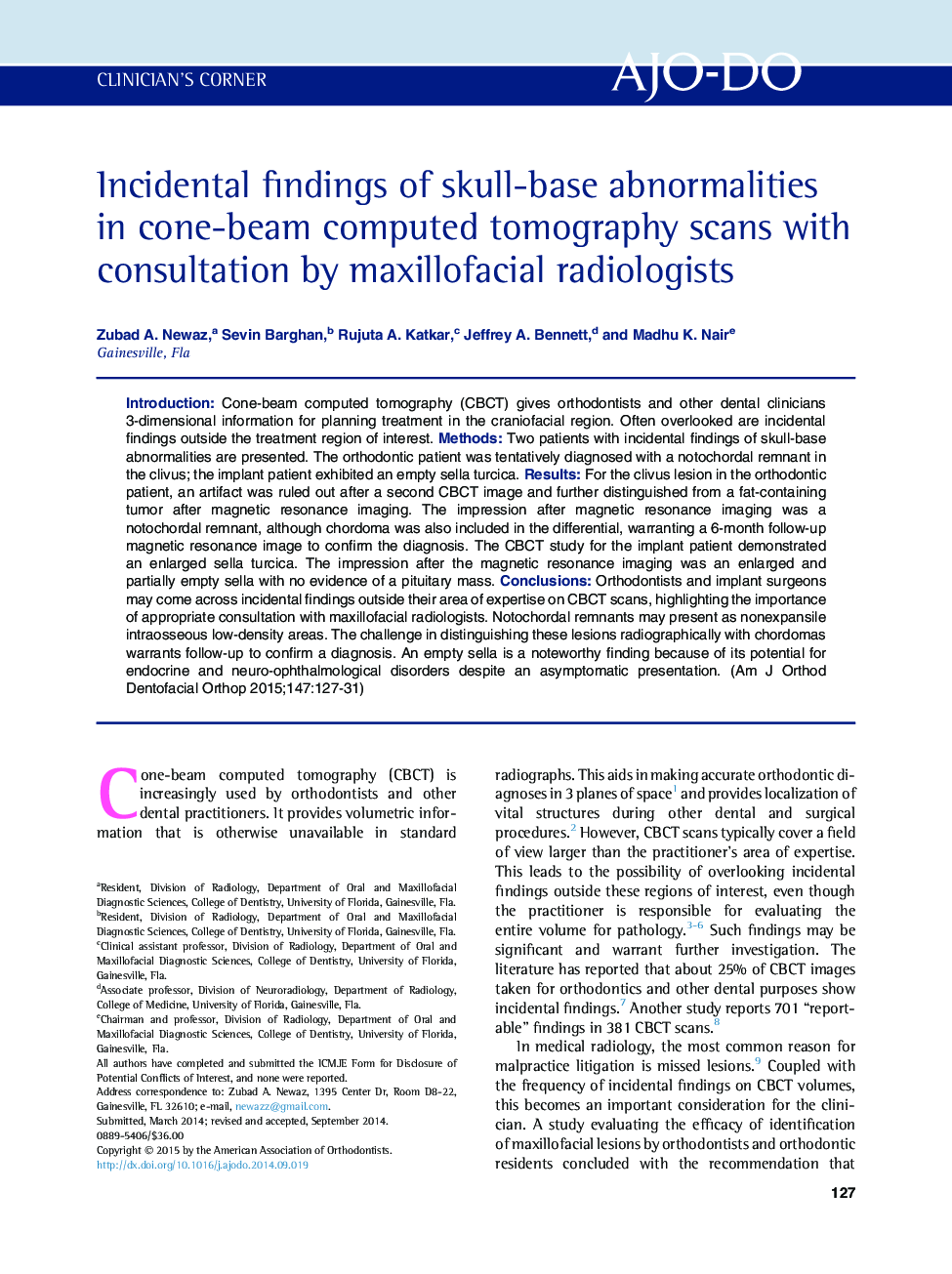| Article ID | Journal | Published Year | Pages | File Type |
|---|---|---|---|---|
| 3116154 | American Journal of Orthodontics and Dentofacial Orthopedics | 2015 | 5 Pages |
IntroductionCone-beam computed tomography (CBCT) gives orthodontists and other dental clinicians 3-dimensional information for planning treatment in the craniofacial region. Often overlooked are incidental findings outside the treatment region of interest.MethodsTwo patients with incidental findings of skull-base abnormalities are presented. The orthodontic patient was tentatively diagnosed with a notochordal remnant in the clivus; the implant patient exhibited an empty sella turcica.ResultsFor the clivus lesion in the orthodontic patient, an artifact was ruled out after a second CBCT image and further distinguished from a fat-containing tumor after magnetic resonance imaging. The impression after magnetic resonance imaging was a notochordal remnant, although chordoma was also included in the differential, warranting a 6-month follow-up magnetic resonance image to confirm the diagnosis. The CBCT study for the implant patient demonstrated an enlarged sella turcica. The impression after the magnetic resonance imaging was an enlarged and partially empty sella with no evidence of a pituitary mass.ConclusionsOrthodontists and implant surgeons may come across incidental findings outside their area of expertise on CBCT scans, highlighting the importance of appropriate consultation with maxillofacial radiologists. Notochordal remnants may present as nonexpansile intraosseous low-density areas. The challenge in distinguishing these lesions radiographically with chordomas warrants follow-up to confirm a diagnosis. An empty sella is a noteworthy finding because of its potential for endocrine and neuro-ophthalmological disorders despite an asymptomatic presentation.
